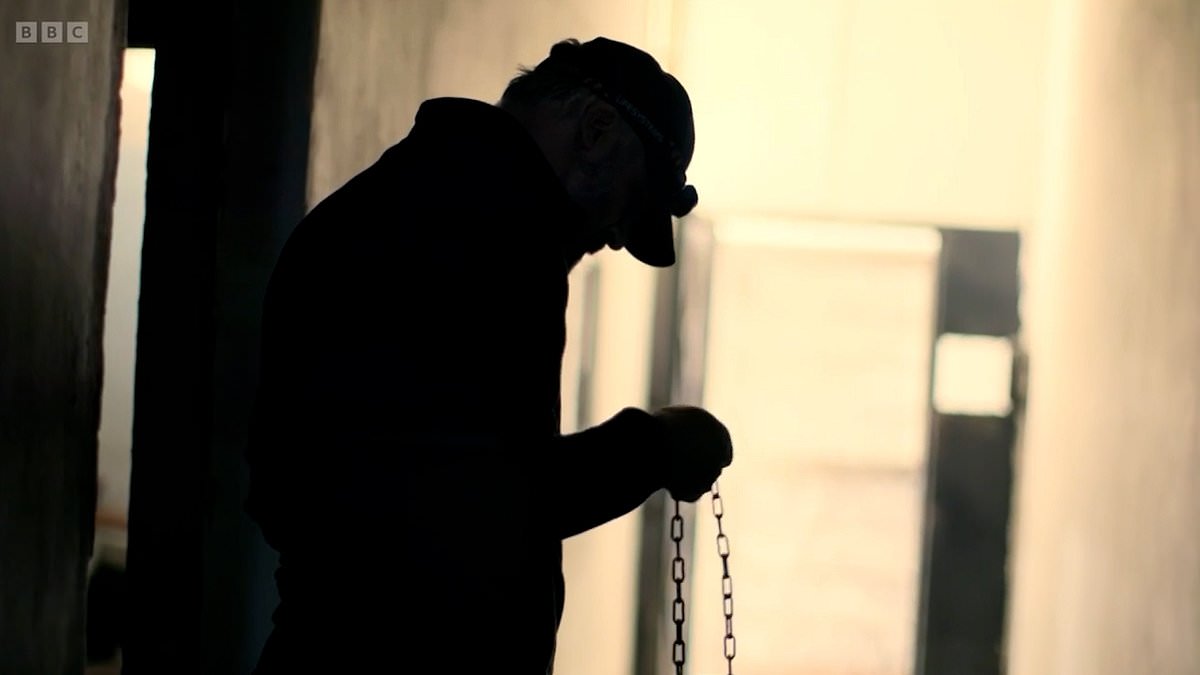A tortured Syrian has revealed how he was tortured using the brutal ‘Ghost Method’ in a shocking new BBC documentary that exposes the horrors of murderous dictator Bashar al-Assad’s prison.
Shadi Haroun, a Syrian dissident arrested in 2011 at the age of 27, was taken back to the detention sites where he was incarcerated for speaking out against the Assad regime.
Assad’s lackeys also held ‘execution parties’, former intelligence workers revealed in the documentary, titled ‘Surviving Syria’s Prisons’.
Shadi took the documentary makers to the cell in the Syrian blacksite he was tortured in. It was completely deserted, following the fall of Assad’s regime in December.
Shadi was seen slowly picking up chains and telling documentary makers: ‘Here is where they would suspend people, on this door, like this. They’d hang people right here with these chains.
Putting his hands up against the cell door, he said: ‘They’d bring a cable and they’d suspend us like this. This is the Ghost Method.
‘You’d be handcuffed here and you’d go down like this. They’d pull us up and we’d be on our toes. You’d last 30 minutes and then you’d pass out, it was impossible to endure. This is what used to happen.’
The ‘Ghost Method’, also known as the Shabeh Method, was reportedly widespread across Syria, with the Atlantic Council detailing in 2016: ‘The warden hangs the prisoner from his hands for a period of time that may stretch into days.
‘The prisoner often loses his ability to move his hands, dislocates his joints, and could cause damage to his brachial plexus, resulting usually in permanent disability.’
The documentary’s creators also spoke to members of Assad’s intelligence infrastructure, one of whom revealed they would hold weekly ‘execution parties.’
Hussam, a military police officer going under an alias, said: ‘On Wednesday mornings, back when I worked there, we’d have an execution party.
‘Our role during executions was to place the rope on the prisoner then step aside. Only an officer can push the chair away.
‘One time we put a guy on the rope. [The officer] pushed the chair, the rope tightened, but after 22 minutes he still hadn’t died so they told me “Grab him and pull him downwards”.
‘I grasped the prisoner and pulled him down. He still didn’t die, so another guard who’s bigger and stronger said “Go, I will do it.”
‘Before [the prisoner] died he said one thing: “I’m going to tell God what you did”. That’s all he said.’
Colonel ‘Zain’, who worked in Assad’s Air Force intelligence, revealed that he and other members of Assad’s security apparatus were shielded from accountability and given a near-total licence to kill.
He said: ‘As security officers, we had the right to kill as we pleased. We wouldn’t be held accountable. The Air Force intelligence had branches and detachments all over Syria.
‘Its mission, like any other agency, was to protect the ruling regime especially if there were any signs of dissent within the army or the air force. There was a lot of ambiguity in how we operated. You have unlimited authority. Go anywhere you want, do whatever you please.
‘The most important thing is to gather intelligence about threats to the regime. Honestly, this was the dream job. Officers could be tempted with benefits like a house, a car, an office, things like that. The power, the authority to kill and do whatever.’
Sergeant ‘Omar’, an intelligence officer who defected to the rebels a year after the civil war broke out, told the documentary’s makers: ‘No one can say anything to an intelligence officer. They were the ultimate authority in Syria. If you wrote someone up, they would disappear for six months and nobody would ask why. All it takes is a report.’
Shadi also detailed another method of torture he was subjected to, which involved being immobilised in a rug for at least a week.
Referring to the prison’s warden, he said: ‘He called the investigator and said to him: “This man, flay him and break his bones. Kill him, do whatever you want. But I need his confession on my desk”.
‘He told me to lie down, they handcuffed my hands behind my back and then cuffed my feet. Then they joined my hands and feet together. They wrapped me up in a blanket – [it was] like being inside a pipe.
‘People started to mess with me for fun. I was sweating and the smell of blood was very strong. I stayed wrapped like that for about a week.’
Shadi said he was brought to the attention of a commander, who ordered him to stop protesting before he was released.
‘After my release, I was thin and very weak. My mother was upset about what happened to me’, he grimly said.
